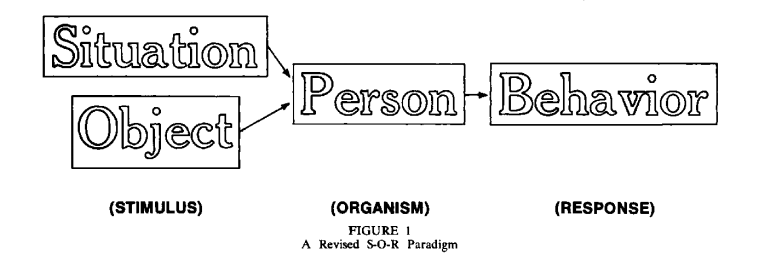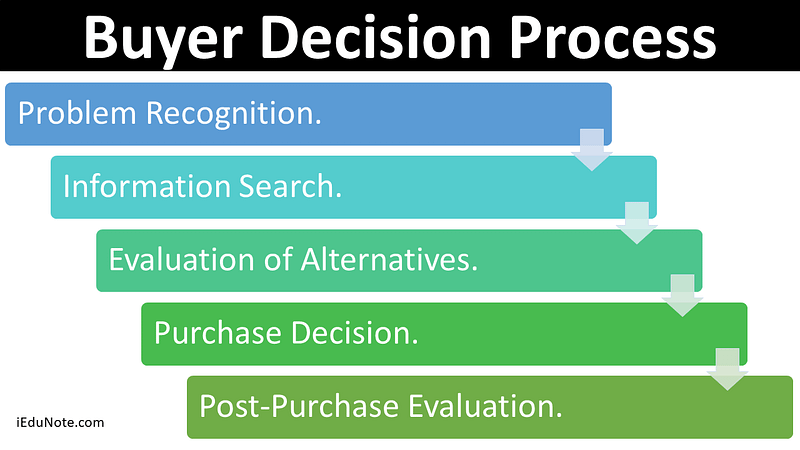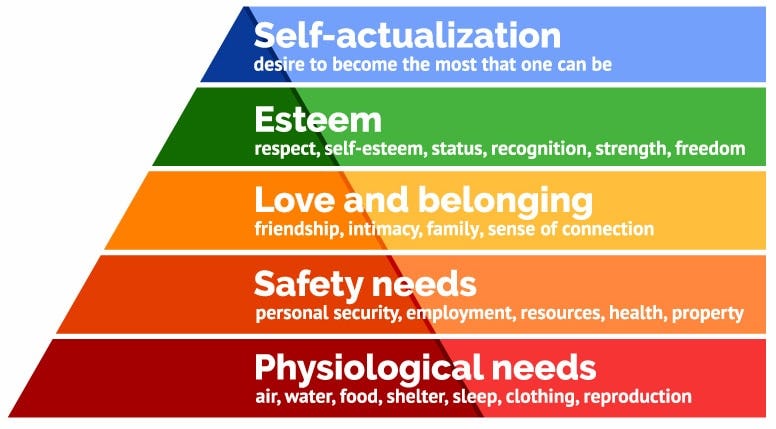Each business should have a pretty good understanding of our target consumers, how they think, and the reasons for how they behave.
If not, it is very difficult to give them exactly they want.
The study of consumer behaviour improves decision-making a some of the guesswork is removed.
This article explores the foundations of understanding consumer behaviour so the business can make better choices with their marketing and attract more of their target customers.
Consumer behaviour is the study of consumption. It aims to have a better understanding of consumer actions and processes used in their purchase decisions, as well as the usage of products and services and how they are disposed of.
Exploring how the consumer’s emotions, attitudes and preferences affect buying behaviour, consumer behaviour draws upon ideas from several fields including psychology, sociology, anthropology, biology, marketing and economics.
“[Consumer behaviour is] all activities associated with the purchase, use and disposal of goods and services, including the consumer’s emotional, mental and behavioural responses that precede or follow these activities.” (Kardes, Cronley, & Cline, 2010)
A consumer could be an individual, groups or organisations. The study of their consumption investigating characteristics such as demographics, personality, lifestyle, and behavioural variables such as usage rates or occasion. Businesses aim to understand the process and underlying motives when satisfying their needs and wants.
Through a better understanding of what causes the consumers to buy certain goods and services, marketers can better determine the needs in the marketplace and accordingly alter marketing to suit. Consumer behaviour is the who, where, when and how of consumption.
The consumer is not necessarily the purchaser. From the information provider to the decision-maker, the user, the payer or the disposer; consumers play numerous roles. Roles also vary depending on the circumstances — for example, within a family, the Mother could be the purchaser, the children consume the items and the mother also disposes of them.
An early model of understanding consumer behaviour was introduced by Belk (1975), based on a stimulus, organism and response. The stimulus an object and a situation, a person (consumer) is the organism and the response to their behaviour (consumption).

Factors that influence consumer behaviour
Consumer behaviour is not static. It changes over a period and depending on the nature of products. Societal trends change, but also does an individual over their lifetime. Equally, all consumers do not behave in the same manner. Some people spend outside their means, others are quite frugal even if they do not need to be.
For many individuals, knowledge of consumer behaviour enhances their ability to consume more wisely. Given the time and energy we devote to consuming, we should aim to be better at it and have at least a basic understanding of how marketers try and influence our behaviour.
“Most of us spend more time buying and consuming than we do working or sleeping. We consume products such as cars and fuel, services such as haircuts and home repairs, and entertainment such as television and concerts.” (Hawkins & Mothersbaugh, 2010)
Some of the factors influencing consumer behaviour are:
- Marketing factors such as product design, pricing, promotion, packaging, positioning and distribution
- Personal factors such as age, gender, education, and upbringing
- Psychological factors such as buying motives, perceptions and attitudes.
- Situational factors such as physical surroundings, social surroundings and time factor
- Social factors such as social status, reference groups, social media and family
- Cultural factors such as religion and ethnicity
- Lifestyle factors such as status, income and identity
- Geographical factors such as region, country and urban or rural.
In a household, the whole family have influence and may become involved at various stages of the decision process, performing distinct roles.
For example, the mother is often the decision-maker, Dad the purchaser, but the children important influencers.
- The Initiator -the person who proposes a brand (or product) for consideration (something in return)
- The Influencer -someone who recommends a given brand
- The Decider — the person who makes the ultimate purchase decision;
- The Purchaser — the one who orders or physically buys it;
- The User — the person who uses or consumes the product.
Some purchase decisions involve long, detailed processes that include extensive information search to select between competing alternatives. Other purchase decisions, such as impulse buys or habitual purchases, are made instantaneously with little or no investment of time or effort in information search.
All of this illustrates the many complexities of understanding consumer behaviour.
Why consumer behaviour is important to marketers
One of their biggest challenges for businesses is to stay relevant to their target market. We must ask questions of our customers such as:
Why do people buy and use certain products?
What do they buy, when do they buy it and how often?
What are their likes, dislikes and expectations?
Why do they decide to buy one product and not another?
Do consumers behave differently individually and in groups?
Consumer behaviour gives us a better understanding of what motivates consumers to make purchases, and the benefits most valued by them. Knowing what consumers value most will improve the decision-making of businesses when creating more effective marketing campaigns. Ideally to sell more! Marketing needs to be strategic to be at its most effective.
“Marketers spend billions of dollars attempting to influence what, when, and how you and I consume. Marketers not only spend billions attempting to influence our behaviour but also spend hundreds of millions of dollars studying our behaviour.” (Hawkins & Mothersbaugh, 2010)
For example, Procter & Gamble adding the word “repeat” to the instructions of their shampoo in the 1980s is a part of marketing folk law — not because it was required, but because it sold more shampoo.
Not only is consumer behaviour relevant to marketing strategy, but it is also important to research and development, management, sales and advertising.
Remember, marketing is not just advertising. It starts with marketing research — which helps us understand consumer behaviour in our market better, which then influences the product or service itself. We want to make it fit the needs of our target market as closely as possible, as it becomes easier to sell.
However, it is not an exact science. Consumer behaviour is difficult to predict. Applying the principals learnt from consumer behaviour knowledge requires human judgment, therefore is not an objective fixed set of rules.
Marketers must have a good understanding of consumer behaviour. The best way to do this is by using market research to study a range of factors that influence their target customers. Customer relationship management (CRM) statistics are an asset for the analysis of customer behaviour.
Consumption is the ultimate goal for marketers, referred to as a behavioural response. But marketing also aims to elicit an emotional (affective) responses, as well as a mental (or cognitive) responses, influencing a consumer’s thought processes. These are often antecedents for consumption.
“Consumer behaviour is of most importance to marketers in business studies as the main aim is to create and retain customers” (Kumar, 2004).
The benefit of understanding consumer behaviour
Understanding consumer behaviour habits of the target market enables marketers to take appropriate marketing decisions concerning the following factors:
- Product design — If a company fails to understand the reaction of a consumer towards a product, there are high chances of product failure.
- Pricing — what price is the target market most likely to purchase at? Is this profitable?
- Promotion — where is the best place to reach the target market? Facebook? They might spend a lot of time reading car magazines. That would be a good place to put an ad.
- Targeting — a group of consumers with the same or similar behaviour. Each group of consumers are different, their needs and wants different from other groups. Consumer differentiation will help to tailor your strategies to the needs of varying customer groups.
- Packaging — what type and style of packaging will be most attractive to customers? Does it matter?
- Positioning — communicating a brand’s point of difference compared to its competitors, to the target market.
- Branding — monitoring other brands in the customer’s consideration set to optimise planning.
- Place of distribution — what location or type of store to sell a product or service?
- Customer retention — retaining customers is cheaper than attracting new ones, so understanding what customers want is key to maintaining their loyalty.
- Predicting changing trends and behaviours — consumer behaviour changes, especially with fast-evolving technology. A consumer behaviour analysis will indicate a shifting trend so marketing efforts can be aligned accordingly.
- Innovating new products and staying relevant — many new products and services end up in failure. It can range from 33% to 90% based on the industry. Understanding customers helps businesses to design offerings that will be consumed.
Buyer decision process
The buyer decision process (or customer buying process) helps marketers to better understand consumer decision-making and how the journey from knowing about a product to making the purchase decision is completed.
The process consists of 5 distinct stages: problem or need recognition, information search, evaluation of alternatives, purchase, and post-purchase behaviour/evaluation.

Problem recognition
The buyer decision process begins with the problem recognition stage, occurring when the consumer identifies a need or want. The strength of the need drives the decision process and the consumer decides they need a product or service to satisfy this desire. Triggers of problem recognition include:
• Out-of-Stock/Natural Depletion — e.g. when you run out of toilet paper
• Regular purchase — e.g. purchasing a bottle of wine each week with the groceries
• Dissatisfaction — e.g. not happy with their current internet service provider and change to a new one.
• New needs/wants — as a family gets bigger, they purchase a bigger vehicle
• Related product — purchasing on product triggers need for accessories, spare parts or complementary products such as purchasing the latest X-Box gaming console and upgrading the TV, buying games to go with it, and extra controllers.
• Marketing induced — advertising triggers the recognition of a problem or needs that consumers did not realise they had. E.g., my internet IS slow. Yes, I do need faster internet!
Information search
The information search phase aims to identify a list of options representing realistic buying options. Consumers search their internal memory and use external sources for information about options that will potentially satisfy their need. In an internal search, the consumer scans their memory for suitable brands.
The evoked set are preferred brands, typically to around 3- 5 alternatives.
Businesses use marketing to increase brand awareness and the likelihood that their brand becomes a part of their target market’s evoked set. An understanding of their target market’s behaviours means they are can be more objective with putting marketing in places where they are more likely to see it and hopefully remember it.
External sources of search include the internet such as social media or product comparison websites, shopping around and talking to friends/family.
Information search and the next phase of evaluation can occur throughout the entire decision process.
Evaluation of alternatives
Consumers engage in a series of rational evaluations of the alternative options available to them. During this evaluation phase, consumers consider a small number of options that could be viable choices.
Being aware a brand exists does not necessarily mean it will be considered as a potential purchase. Realistic purchase options are known as the consideration set, each consumer will have distinctive characteristics they are looking for, searching for the best value and the best fit for their needs.
Different evaluation criteria are used depending on each unique buying situation, consumers assessing and then ranking the relative merits of different options available. Consumers with low knowledge about a product category tend to evaluate a brand based on functional characteristics.
Towards the end of the evaluation stage, consumers form a purchase intention.
Purchase decision
Once the alternatives have been evaluated, the decision is made by the consumer and they proceed through to the actual purchase. To increase the chances of customers purchasing with them, businesses use techniques to improve conversion rates, such as a strong call-to-action in advertising. “Buy now while stocks last!”. This encourages an immediate sale.
Some customers might know all along who they want to purchase with. Others might spend an extended period researching information about the different options available before they make their decision.
Post-purchase evaluation
This process is not complete until after the consumption of the product or service and the consumer engages in a post-purchase evaluation. Consumers compare their experience with the product or service and the perceived value with their expectations that were formed during information search and evaluation. This is called expectancy disconfirmation and is a strong driver of satisfaction.
Factors evaluated include price, functionality, and quality.
A consumer’s next purchase decision for that good or service is influenced by this evaluation. If consumers feel some uncertainty or regret towards their choice, they are unlikely to choose that brand again.
Consumer motivations
An underlying motivation drives a consumer to act and purchase. These motivations fit under the problem recognition phase discussed above.
This motivation can be either positive or negative. A positive motivation could be a pleasure — having dinner a nice restaurant or a night on the town.
A negative motivation could be the avoidance of unpleasantness such as purchasing toothpaste to minimise tooth decay, getting toothaches and having to visit a dentist.
Abraham Maslow’s well-known Hierarchy of needs model is one way to help understand the motivation.

Although not a marketing model, it is commonly applied across the social sciences. This model can help marketers to understand the unique needs and levels of motivations of customers.
It contains five levels of needs, organised accordingly to the level of importance. Lower order needs are most important, consumers typically using most of their time, energy and finances attempting to satisfy these.
Only then can they move onto the higher-order needs and they become meaningful.
- Physiological is a human’s basic levels of needs such as food, water and sleep. We need these to survive.
- Safety is the need for physical safety, shelter and security. Purchasing a house or paying rent.
- Belonging the need for love, friendship and a desire for group acceptance. A man buys his new wife an expensive ring when they get married.
- Esteem is the need for status, recognition and self-respect. Purchasing the latest BMW car or a designer handbag and shoes.
- Self-actualisation is the desire for self-fulfilment such as personal growth or artistic expression. You might over to the other side of the world to see a motivational speaker such as Tony Robbins at a conference.
Thank you for reading, I hope you enjoyed the content on consumer behaviour and learnt something new.
As you can see, there is a lot of psychology behind the reasons why people buy. The better a business understands this process, the best they can serve the customers in their market. This article has explored some of the important components and theory of consumer behaviour - but it is a huge topic, so this just scratches the surface.
Learning more about the psychology of consumption should be ongoing for any serious marketer.
This article was first posted on the BYB Marketing Blog - https://brandyourselfbetter.com/blog/post/159883/consumer-behavior-understanding-why-what-when-and-how-people-buy



No comments:
Post a Comment